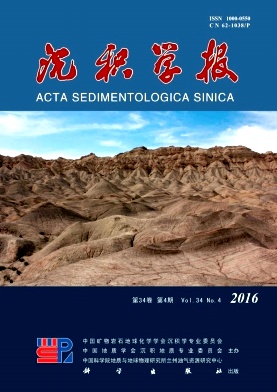Siliceous Rock Origin and Significance in the Uyirtus Formation Northwestern Margin of Tarim Basin
doi: 10.14027/j.cnki.cjxb.2016.04.005
- Received Date: 2015-08-24
- Rev Recd Date: 2015-11-23
- Publish Date: 2016-08-10
-
Key words:
- siliceous rocks /
- sedimentary environment /
- Uyirtus Formation /
- Tarim Basin
Abstract: The Lower Cambrian Uyirtus Formation is a set of complicated lithological source rocks, with widely distributed bedded siliceous rocks. Bedded siliceous rocks are always formed in special environment, thus, study of siliceous rocks will help to review ancient sedimentary environment of the time when Lower Cambrian Uyirtus Formation was depositing and predict the distribution of high quality source rocks. Through rock slice, SEM, probe detection combined with TOC analysis, noticing that the siliceous rocks formed in rift background which imply the enclosed high salinity alkaline water. The dynamic changes of the sedimentary water power made the silica rock have the layered structure and clastic structure. Terrigenous clastic, volcanic activity and organisms provide silicon for the water and hydrotherm suppling nutrient for the organisms that led to a flourishing development in algae and small shell species. The distribution of organisms controlled by the position of volcanic thermal water vent and the preservation condition in special water, so the Uyirtus Formation become good source rocks. The rifting is formed by the taphrogenesis within the platform that caused by tension stress in Early Cambrian period. This tectonic movement led to deposition of widely distributed source rocks, indicating that great exploration potential in Early Paleozoic-Neoproterozoic of Tarim basin.
| Citation: | YANG ChengYu, LI MeiJun, NI ZhiYong, YANG FuLin, CHEN HaoWei. Siliceous Rock Origin and Significance in the Uyirtus Formation Northwestern Margin of Tarim Basin[J]. Acta Sedimentologica Sinica, 2016, 34(4): 653-661. doi: 10.14027/j.cnki.cjxb.2016.04.005 |






 DownLoad:
DownLoad: